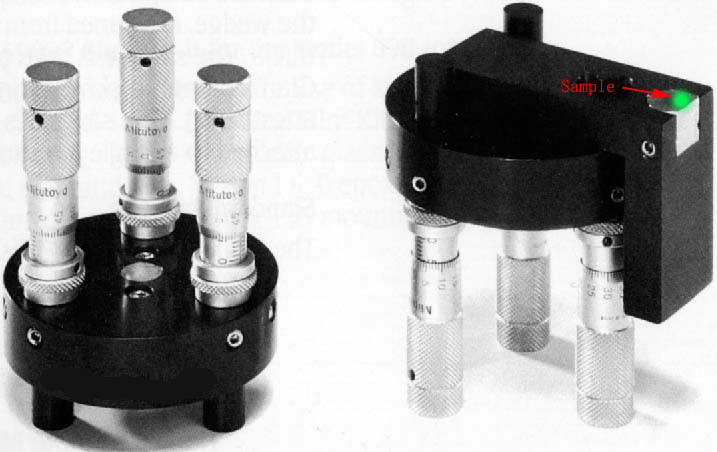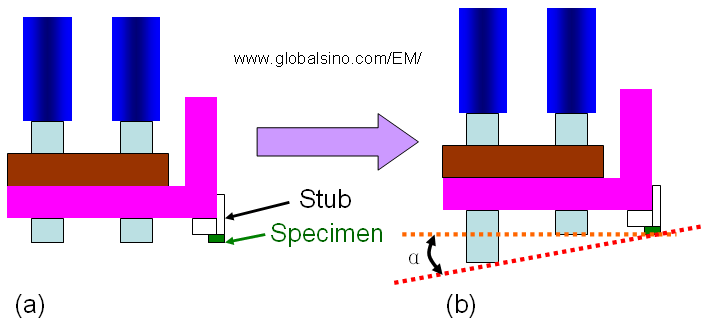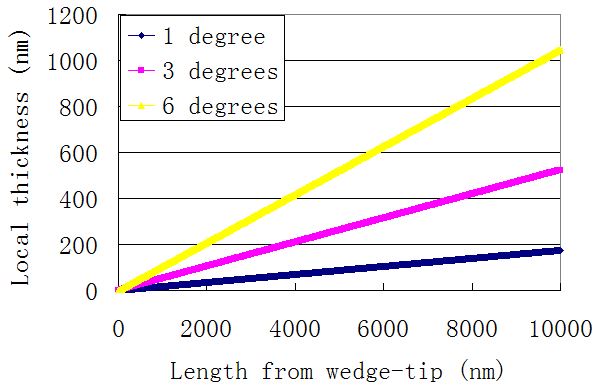=================================================================================
Similar to wedge-FIB milling for TEM specimen preparation, wedge-mechanical polishing also is widely used in TEM specimen preparations.
Both plan-view and cross-sectional TEM specimens can be prepared by the wedge polishing method. And then, Ar+ ion beam milling can be used for cleaning purpose. In the wedge polishing method, tripod polishers, made by South Bay Technology, are often used to mount and support the specimens. Figure 2395a shows a schematic illustration of tripod polishers made by South Bay Technology.

Figure 2395a. The top view (a) and bottom view (b) of a tripod polisher.
The bottom view also shows a specimen (indicated in green) attached in the polisher.
In this polishing technique, most steps are similar to the ones in general mechanical polishing methods. However, in the wedge polishing method, an angle (α) can be obtained by changing the leg graduations as shown in Figure 2395b.

Figure 2395b. Adjusting an angle by changing the leg graduations.
The specimen thickness (t) of the location from the wedge-tip can be given by,
t = 2·l·tan(α/2) ----------------------- [2395]
Here, t, l and α stand for the dimention and angle in Figure 2395c. Figure 2395d shows the relationship between the specimen thickness and the lenght from the wedge-tip for angles of 1, 3 and 6°. You can also calculate the local thickness for more angles using the excel file.

| Figure 2395c. Schematic illustration of wedge-shaped TEM specimen showing t, l and α. |

| Figure 2395d. Relationship between the specimen thickness and the lenght from the wedge-tip for angles of 1, 3 and 6°. |
|

